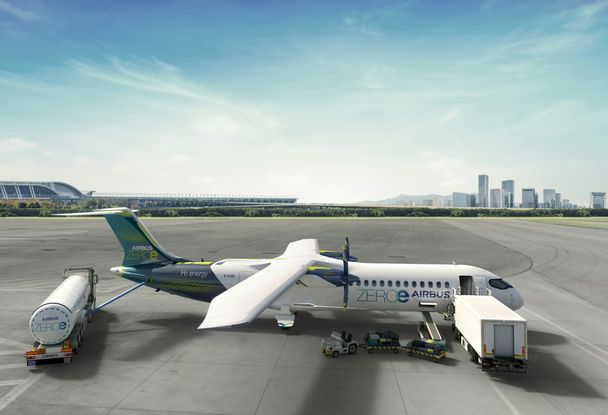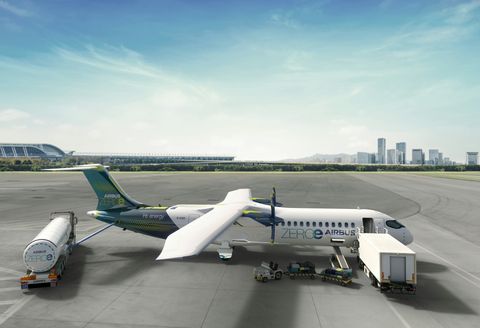eXtra Performance Wing demonstrator takes off

Led by Airbus subsidiary and technology incubator UpNext, the eXtra Performance Wing project aims to improve flight performance and respond to environmental concerns by completely rethinking aircraft wings as we know them today.
Using biomimicry – biologically inspired engineering – the project seeks to develop a wing that can change shape and form during flight to maximise its aerodynamic efficiency. If the concept is successful and integrated into new aircraft, it has the potential to significantly reduce fuel consumption.
The November first flight was an important milestone for the project because the demonstrator is fitted with the exact systems that it will have when the eXtra Performance Wings are installed for flight testing starting in 2025. The data gleaned from this and subsequent flight tests will allow Airbus engineers to measure important baseline performance metrics that will be used to determine the impact of the new wing design, such as reductions in CO2 emissions and fuel consumption.
While the eXtra Performance Wing technologies could be applicable to any kind of aircraft and propulsion system, the chosen demonstrator is a modified Cessna Citation VII business jet. As the targeted wingspan of the eXtra Performance Wing is more than 50 metres (that’s long: an A320 wingspan is 35.8 metres), the Cessna’s 16 metre wingspan represents an approximately one-third scale model of the final design.
“Things are evidently simpler at a smaller scale,” says Sebastien Blanc, eXtra Performance Wing Technical Director. “But we chose the Cessna specifically because it constituted the best trade off between project complexity and representativeness of the final design.”
The eXtra Performance Wing: a design overview

Launched in September 2021 the eXtra Performance Wing project is part of Airbus' Wing Research portfolio. This project explores some of the many technologies that could one day be integrated into the next-generation of Airbus aircraft, and complements the Wing of Tomorrow programme. Airbus UpNext seeks to fast-track future technologies by developing radical technological breakthroughs in an agile environment.
The overall goal of the eXtra Performance Wing project is to provide multiple wing configurations that dynamically adapt to flight conditions. The design incorporates innovative active control technologies as well as physical changes to the wing structure. Gust sensors on the front of the aircraft will register changes in turbulence, triggering relevant adjustments to the control surfaces of the wing. “This system is designed to be entirely automatic,” says Blanc. “The eXtra Performance Wing technologies, which change the shape of the wing by mimicking a bird's feathers, will adjust automatically to maximise aerodynamic flow.”
There are also the hinged wingtips, which have a dual purpose. On the ground they prevent the aircraft from exceeding the maximum wingspan length that can be accommodated at airport gates (36 metres), and in the air they are flexible, able to change shape to avoid putting too much pressure on the wing. The wingtips also allow for a longer span to be achieved, increasing lift and reducing drag.
To ensure the feasibility of the concept, a 3D-printed wind-tunnel model has already been tested extensively at low speeds at Airbus' wing research facility in Filton, UK. With testing now completed, the design has been finalised and manufacturing of the different wing parts has already begun. The eXtra Performance Wing demonstrator’s production is a classic example of collaboration between Airbus’ four founding nations: the UK is manufacturing the wings, Spain will build the folding wingtips, and the high lift system will be designed in Germany. The modification and assembly of the aircraft will take place in France.

Up next: touch down in Cazaux, France
Once the initial flight testing has harvested enough baseline data, the demonstrator will be flown to Cazaux, France, where it will be based for the remainder of the project. A remote operation system will be integrated into the aircraft, followed by flights to test the communication between the 20 antennas on the aircraft and the control centre on the ground. Then, in 2024, the eXtra Performance Wings will be attached to the Cessna and undergo ground testing before the first flights begin in 2025.
The demonstrator will be remotely piloted during flight testing to enable UpNext's engineers to push the technologies onboard to their limits. As the Cessna is only a demonstrator and will not be put into production, the decision to have a pilot test the plane from a ground centre instead of onboard also alleviates the need to certify the demonstrator for human flight. “We want the flight testing to expose the eXtra Performance Wing to as many realistic flying situations as possible. This will give the different technologies the best possible chance of proving themselves, and of one day being integrated into the wings of tomorrow,” explains Blanc.
The results of the remotely piloted flight testing will determine the success of the different technologies, but already Blanc says the project is paying off: “We are already seeing the fruits of our labour, and we have learned so much along the way. We have a real opportunity here to make a contribution to reducing fuel burn. Just having the potential to change the aerospace industry like this is huge.”



